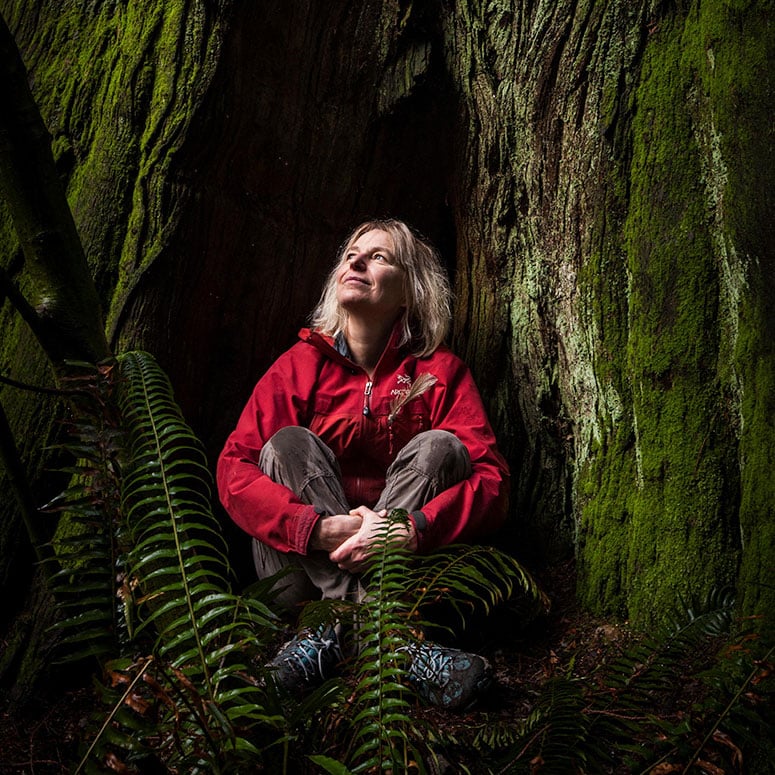When UBC Faculty of Forestry professor Suzanne Simard first heard she had been named one of TIME Magazine’s 100 most influential people in the world for 2024, she didn’t believe it was real.
“I was sure it was either a hoax or they had the wrong Suzanne Simard,” she recalled with a smile.
A couple of days later however the forest ecologist from humble B.C. beginnings realized the distinction was the real thing and her name had been added to a list that included luminaries like actor and advocate Michael J. Fox, fellow Canadian scientist and professor Yoshua Bengio, and Brazilian environment and climate change leader Marina Silva, to name a few.
Published annually, the TIME100 list is reported to take months to produce and involves a team of reviewers who must analyze iconic individuals from all corners of the globe. Their mission? To identify the true trailblazers whose impact on the world’s narrative over the past year was the most profound.
In Simard’s case, she was named for her decades of research that showed beneath the forest floor, trees communicate via vast networks of mycorrhizal fungi. Those networks allow them to share resources and communicate information about threats such as drought or disease.
She is quick to point out Indigenous people recognized trees are connected to a fungi network centuries before anyone else did, and that previous scientific studies have been conducted on the phenomenon as well. The difference is Simard and her team’s research revolutionized the conventional perception of forests. Rather than viewing trees as competitors for water, sunlight, and nutrients, Simard’s research unveiled a nuanced understanding: forests are complex adaptive systems that consist of interdependent ecosystems.
Although more naturally inclined to stay out of the spotlight than in it, Simard’s name has been internationally recognized ever since her New York Times bestseller Finding the Mother Tree: Discovering the Wisdom of the Forest was published in 2021. The book has been translated into multiple languages all over the world and even talked about in pop culture including fan television favorite, critically acclaimed Ted Lasso which won 13 Emmy awards in its first season.
The attention has not slowed down research efforts for Simard and her team who are focused on continuing her work with the Mother Tree Project (MTP), a long-term field experiment that investigates forest renewal practices aiming to safeguard biodiversity, carbon storage, and forest regeneration as climate changes. One of the largest endeavors of its kind, spanning a 900-kilometre climate gradient that encompasses nine forest sites across B.C., the project has since catalyzed the creation of the Mother Tree Network (MTN).
The Network unites scientists, First Nations and a diverse group of collaborators in a collective mission to help guide community-based regenerative forestry research, particularly in collaboration with First Nations and other communities striving to manage forests through a regenerative lens.
With a commitment to informing the design of regenerative forestry practices for a changing climate, Simard and her team advocate for five, evidence-based management recommendations:
- Practice regenerative forestry
- Ensure stewardship efforts are led by First Nations and local communities.
- Protect old and primary forests worldwide
- Enhance management of new, secondary forests
- Restore plantations so they are diverse and sequestering carbon once again
“The answer to our climate and biodiversity crises lies in the forest,” says Simard.






Congratulations Dr. Simard! I finished listening to the Audible version of your book right before I read the Time Magazine list of 100! Much deserved recognition! I only wish I could have been your student 30 years ago when I tried to study the research first at Duke University. Thank you for bringing the forest into the hearts and minds of the Western industrial world.
a fully deserved recognition. Ever a fan of hers and her approach since reading Finding The Mother Tree two yrs ago. So congratulations